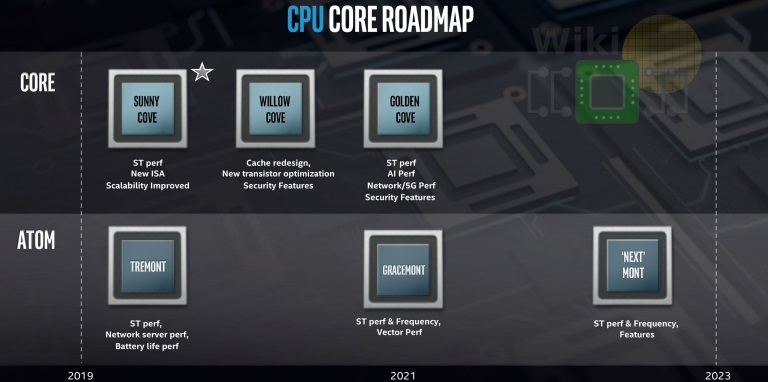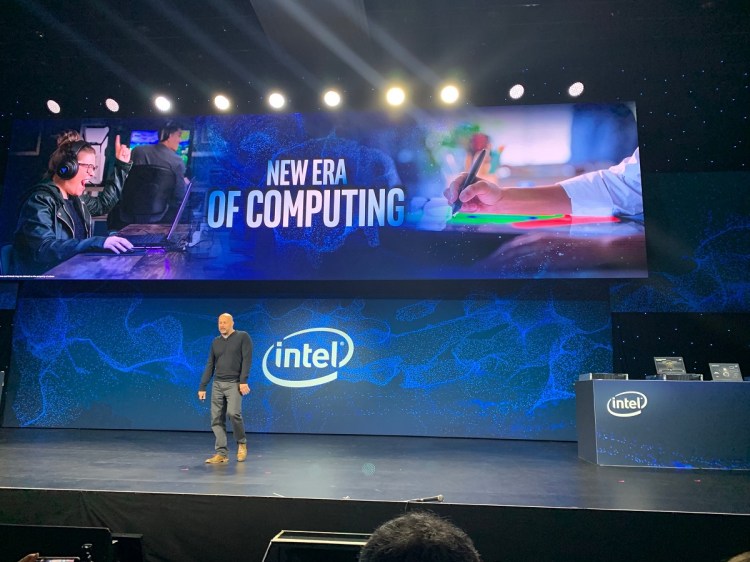Intel reported earnings that beat analyst expectations, but the big PC and server chipmaker missed expectations on revenues by $360 million. In after-hours trading, Intel’s stock is down 6.5 percent to $46.20 a share.
The Santa Clara, California-based chipmaker reported non-GAAP earnings per share of $1.28 on revenues of $18.66 billion. Analysts expected Intel to report earnings per share of $1.22 a share on revenues of $19.02 billion.
For the full year, Intel reported earnings per share of $4.58, or $21.5 billion, on revenue of $70.8 billion. Intel said it has approved a five percent increase in its cash dividend to $1.26 per share on an annual basis.
“2018 was a truly remarkable year for Intel with record revenue in every business segment and record profits as we
transform the company to pursue our biggest market opportunity ever,” said Bob Swan, Intel CFO and interim CEO, in a statement. “In the fourth quarter, we grew revenue, expanded earnings and previewed new 10-nanometer-based products that position Intel to compete and win going forward. Looking ahead, we are forecasting another record year and raising the dividend based on our view that the explosive growth of data will drive continued demand for Intel products.”
June 5th: The AI Audit in NYC
Join us next week in NYC to engage with top executive leaders, delving into strategies for auditing AI models to ensure fairness, optimal performance, and ethical compliance across diverse organizations. Secure your attendance for this exclusive invite-only event.
The PC chip and server processor giant also made a lower prediction for the first quarter than expected. Intel said it expects Q1 earnings per share of 87 cents on revenues of $16.0 billion. In terms of expectations, Intel was forecast to predict Q1 revenue of $17.31 billion and earnings per share of $1.01. Analysts expected 2019 earnings per share of $4.53 and revenue of $73.19 billion, while Intel forecast earnings per share of $4.60 on revenues of $71. 5 billion.
It’s not clear why the estimates are off, but Intel did report it would put $15.5 billion into capital spending in 2019, compared to analyst estimates of $14.5 billion. Analysts expected Intel’s capital spending to drop to $14.3 billion in 2019.
Intel was cautious on capital spending for a few years, but it said it would spend $15.5 billion in 2018, up from $11.8 billion in 2017. The year marked delays in the launch of Intel’s 10-nanometer manufacturing process, which promises to make chips smaller, faster, and cheaper.
Intel’s Data Center Group (DCG), which supplies server processors and data center products, saw a 9 percent rise in Q4 to $6.1 billion. But analysts have been concerned about a slowdown, particularly in Asia. AMD is also getting more competitive with its second-generation of Epyc server CPUs debuting this year. Those chips are based on AMD’s Zen technology, which can execute 52 percent more instructions per clock than the previous generation.

Above: Intel’s road map
2018 turned out to be a better year than expected for Intel’s Client Computing Group (CCG). PC demand has been healthy, but Intel had shortages during the year. That helped AMD get its Ryzen desktop and mobile CPUs off the ground. For Q4, Intel’s client computing group reported $9.8 billion in revenue, up 10 percent from a year earlier. Overall 2018 revenue was $37 billion, up 9 percent for the year.
Flash memory group sales were $1.1 billion in Q4 thanks to flash production ramps and Optane adoption.
Intel’s Internet of Things Group (IOTG), which include chips for everyday smart objects and Mobileye’s driver-assistance processors, dropped in Q4 to $816 million, down 7 percent from a year ago.
Meanwhile, Intel’s Programmable Systems Group (PSG), which was created from its 2015 acquisition of FPGA developer Altera, was better-than-expected at $612 million, up 8 percent from a year earlier.


